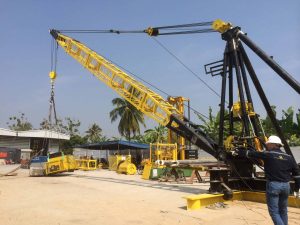In the realm of commercial transportation, semi trailers are indispensable for hauling large volumes of goods across vast distances. Among the various types, tandem semi trailers and single axle semi trailers stand out for their unique characteristics, particularly in terms of weight distribution. This article delves into the specifics of how these two trailer types differ in distributing their load, examining the implications for power, cost, efficiency, lifespan, and more.
Tandem Semi Trailers
Weight Distribution and Capacity
A tandem semi trailer features two sets of axles at the rear end of the trailer, providing a notable advantage in distributing the weight of the cargo more evenly. This design allows for a higher maximum load capacity, typically up to 34,000 pounds per axle group, subject to regulations and road conditions. The even distribution of weight not only enhances road stability but also reduces wear and tear on road surfaces.
Efficiency and Cost Implications
The efficiency of a tandem semi trailer lies in its ability to carry more goods in a single trip, significantly reducing the cost per unit of freight transported. However, the initial purchase price and maintenance costs are generally higher compared to single axle semi trailers. The increased complexity of the axle system requires more frequent inspections and potential repairs, impacting the overall budget.
Performance and Speed
With more axles, tandem semi trailers offer improved traction and braking performance, especially under heavy loads. This results in safer and more reliable transport over long distances. However, the added weight of the extra axle can slightly reduce the trailer’s top speed and fuel efficiency.

Single Axle Semi Trailers
Weight Distribution and Capacity
Single axle semi trailers have one axle at the rear, leading to a more concentrated weight distribution. This configuration limits the maximum load capacity to approximately 20,000 pounds, making it less suitable for heavy or evenly distributed loads. The concentrated weight can also lead to increased pressure on road surfaces, potentially causing more damage over time.
Cost Efficiency
Single axle semi trailers are generally less expensive to purchase and maintain, making them an attractive option for smaller loads or operations with tight budgets. Their simpler design translates to lower maintenance costs and fewer potential points of failure, potentially extending their lifespan.
Speed and Maneuverability
The lighter weight of single axle trailers offers advantages in terms of speed and fuel efficiency. They are also more maneuverable, making them ideal for tight spaces or urban environments where navigating through traffic and making sharp turns is necessary.
Conclusion
Choosing between a tandem semi trailer and a single axle semi trailer depends on specific needs such as load capacity, budget constraints, and operational efficiency. Tandem trailers excel in hauling heavier loads efficiently and safely, thanks to their superior weight distribution and stability. On the other hand, single axle trailers offer cost savings, speed, and maneuverability for lighter loads and tighter spaces. Understanding these differences is crucial for logistics professionals and transportation companies to optimize their operations and meet their transportation objectives effectively.